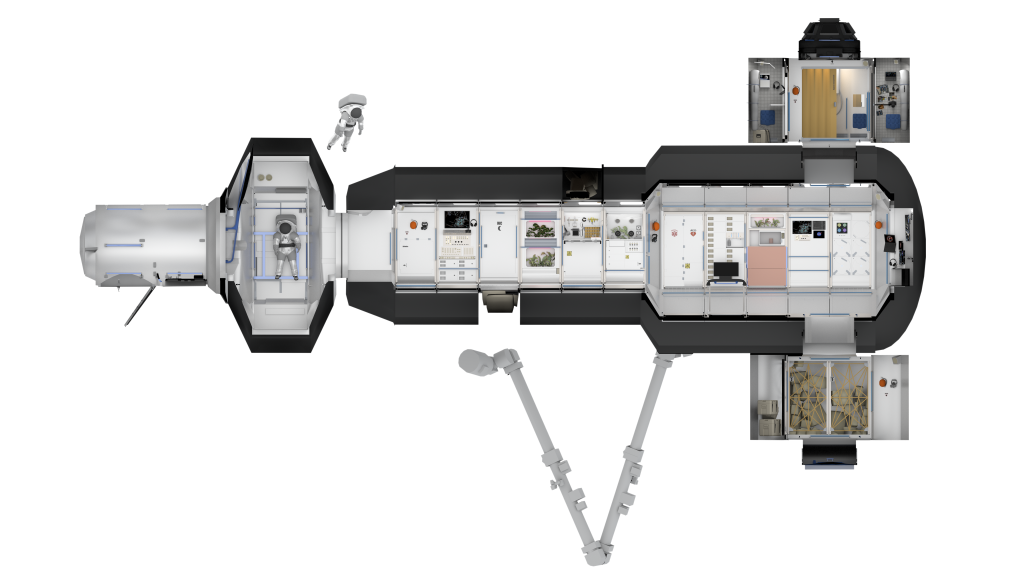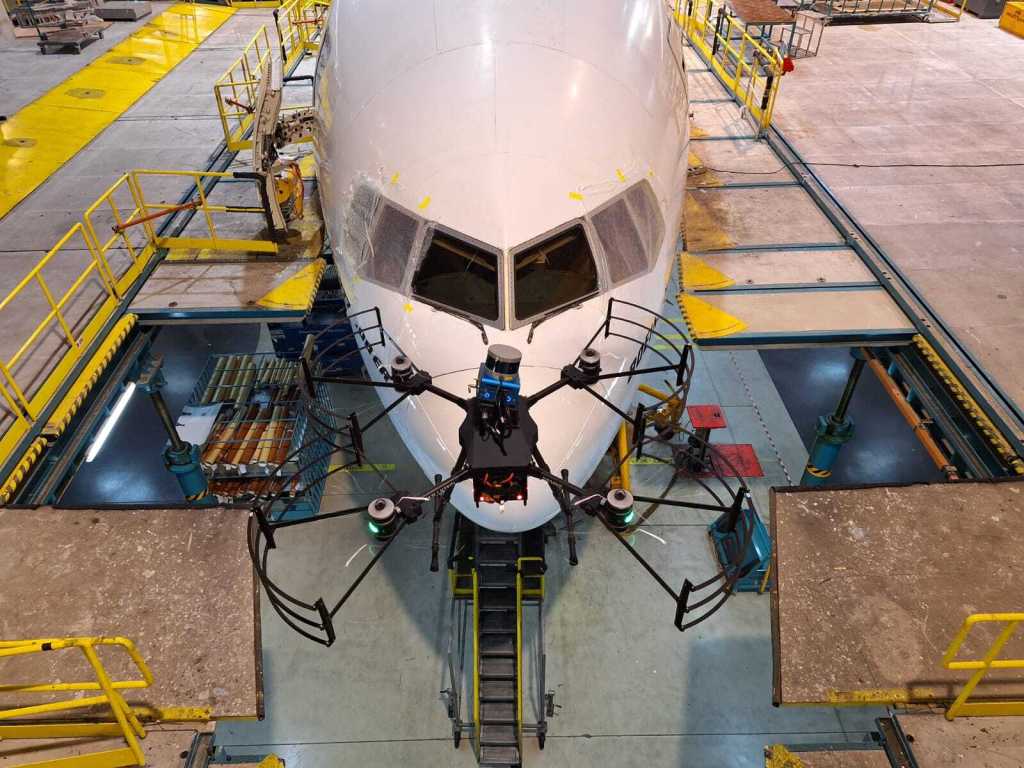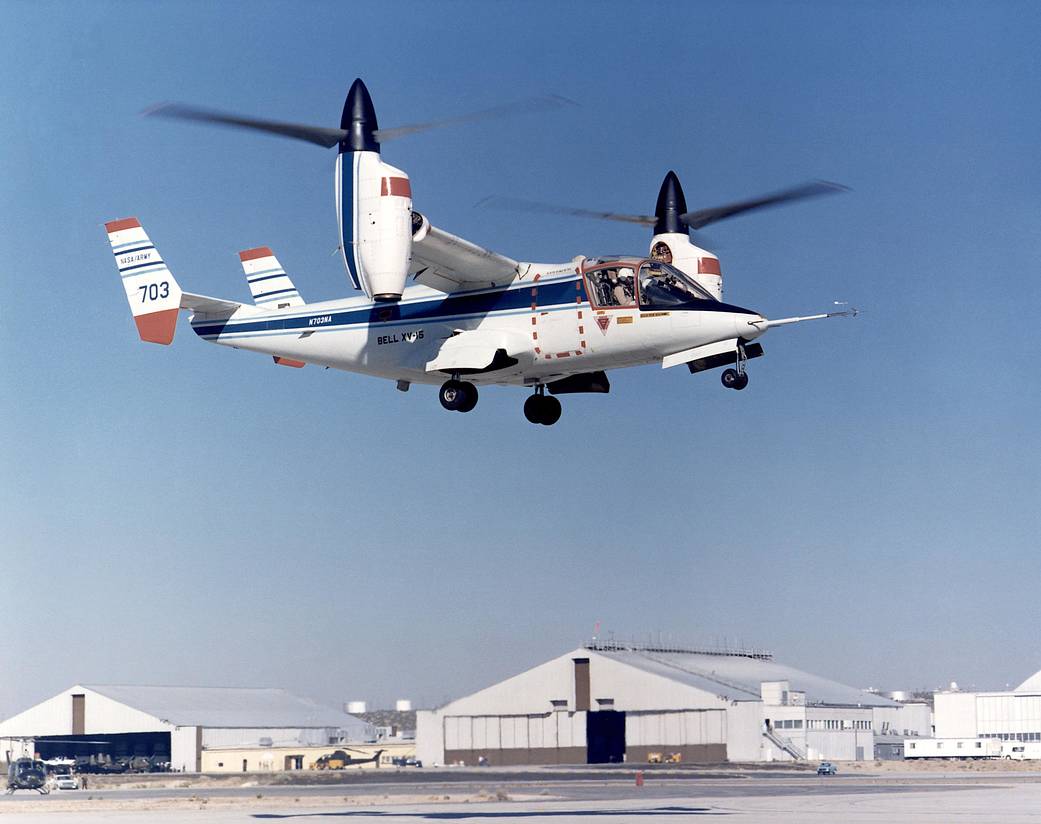ECN-13850
The unique XV-15 Tiltrotor aircraft is seen in vertical flight at the NASA Dryden Flight Research Center. The XV-15s, manufactured by Bell, were involved in limited research at NASA/Dryden in 1980 and 1981.
The development of the XV-15 Tiltrotor research aircraft was initiated in 1973 with joint Army/NASA funding as a “proof of concept”, or “technology demonstrator” program, with two aircraft being built by Bell Helicopter Textron (BHT) in 1977.
The aircraft are powered by twin Lycoming T-53 turboshaft engines that are connected by a cross-shaft and drive three-bladed, 25 ft diameter metal rotors (the size extensively tested in a wind tunnel). The engines and main transmissions are located in wingtip nacelles to minimize the operational loads on the cross-shaft system and, with the rotors, tilt as a single unit.
For takeoff, the prop rotors and their engines are used in the straight-up position where the thrust is directed downward. The XV-15 then climbs vertically into the air like a helicopter. In this VTOL mode, the vehicle can lift off and hover for approximately one hour.
Once off the ground, the XV-15 has the ability to fly in one of two different modes. It can fly as a helicopter, in the partially converted airplane mode. The XV-15 can also then convert from the helicopter mode to the airplane mode. This is accomplished by continuous rotation of the prop rotors from the helicopter rotor position to the conventional airplane propeller position. During the 10- to 15-second conversion period, the aircraft speed increases and lift is transferred from the rotors to the wing. To land, the prop rotors are rotated up to the helicopter rotor position and flown as a helicopter to a vertical landing.Oct 1980NASA Photo / › XV-15 Project Description
2 min read


























